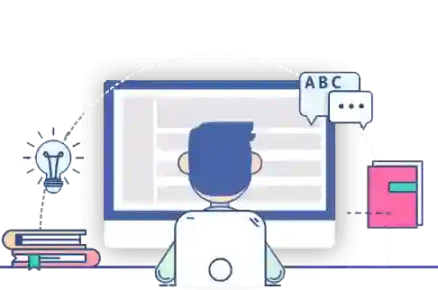Full Stack Java Developer Roadmap for Beginners in 2023
The journey of becoming a full stack Java developer can be an exciting and rewarding one, especially in 2023, where technology continues to advance rapidly, and the demand for versatile developers remains high. Whether you’re a coding enthusiast with minimal experience or a seasoned programmer looking to expand your skill set, this comprehensive roadmap will guide you through the essential steps and skills needed to embark on a successful career as a full stack Java developer.
1. Learning the Basics of Java
Your journey begins with a solid understanding of Java, one of the most versatile and widely used programming languages in the world. Java serves as the foundation for full stack development, and you should become proficient in its syntax, data structures, and object-oriented programming principles. There are numerous online courses, tutorials, and textbooks available to help you grasp the basics of Java. Kelly Technologies is one of the top-notch training institutes in Hyderabad that offers comprehensive Java Full Stack Developer Course in Hyderabad.
2. Front-End Technologies
To become a full stack developer, you need to be well-versed in both front-end and back-end technologies. Start by diving into front-end development, where you’ll learn HTML, CSS, and JavaScript. These fundamental technologies are the building blocks of web development and are essential for creating visually appealing and interactive user interfaces.
3. JavaScript Frameworks and Libraries
Once you have a grasp of JavaScript, explore popular front-end libraries and frameworks like React, Angular, or Vue.js. These tools will empower you to build dynamic and responsive web applications, giving you a competitive edge in the job market.
4. Back-End Development
Transition to the back-end, where you’ll work with Java to create server-side applications. Learn about Java-based web frameworks like Spring and Spring Boot, which simplify back-end development by providing tools for handling routing, databases, and RESTful APIs.
5. Databases
A solid understanding of databases is crucial for a full stack developer. Learn SQL to work with relational databases like MySQL or PostgreSQL. Additionally, explore NoSQL databases like MongoDB for handling unstructured data. Understand database design principles, normalization, and optimization to ensure efficient data storage and retrieval.
6. RESTful APIs
Master the creation and consumption of RESTful APIs (Application Programming Interfaces). This skill is vital for enabling communication between your front-end and back-end systems, allowing data to flow seamlessly between them.
7. Version Control
Familiarize yourself with version control systems like Git. Version control helps you track changes, collaborate with others, and manage your codebase effectively.
8. Cloud Services and Deployment
Learn to deploy your applications to cloud platforms like AWS, Azure, or Heroku. Understanding cloud services and deployment practices is essential for making your web applications accessible to users worldwide.
9. Security Practices
As a developer, you must prioritize security. Learn about common security threats and best practices for securing your web applications, including input validation, authentication, and authorization.
10. Testing and Debugging
Develop proficiency in testing your code and debugging issues. Familiarize yourself with testing frameworks and tools like JUnit for Java and Jest for JavaScript.
11. Continuous Integration/Continuous Deployment (CI/CD)
Implement CI/CD pipelines to automate the testing, building, and deployment of your applications. This practice ensures that your code is always up-to-date and ready for production. trustyread
12. Soft Skills and Collaboration
Remember that full stack development is not just about coding. Develop strong communication skills, teamwork, and project management abilities. Collaborate effectively with designers, other developers, and stakeholders to deliver successful projects.
13. Keep Learning and Stay Updated
The technology landscape is constantly evolving. Continuously update your skills and stay informed about the latest trends and tools in the field of full stack Java development.
Difference Between Java Developer and Full Stack Developer
Java Developer and Full Stack Developer are both roles in the software development field, but they differ in their focus, responsibilities, and skill sets. Here’s a breakdown of the key differences between these two roles:
1. Specialization:
- Java Developer: A Java Developer specializes in programming using the Java programming language. They primarily work on back-end development, creating server-side applications, web services, and APIs using Java and related technologies. Their focus is on the server-side logic and data processing.
- Full Stack Developer: A Full Stack Developer, on the other hand, is a more versatile role. They are proficient in both front-end and back-end development. In addition to Java, a Full Stack Developer typically works with a combination of front-end technologies like HTML, CSS, and JavaScript and back-end technologies like Java, Python, Ruby, or others. They have a broader skill set that allows them to work on all aspects of web application development, from user interfaces to server-side functionality.
2. Scope of Responsibilities:
- Java Developer: The primary responsibilities of a Java Developer include designing, developing, and maintaining server-side applications, databases, and web services. They work on tasks such as database integration, API development, and business logic implementation.
- Full Stack Developer: Full Stack Developers have a wider scope of responsibilities. They can work on the entire stack of a web application, which includes both the front-end and back-end. They handle tasks such as creating user interfaces, designing the user experience, connecting the front-end to the back-end, and deploying applications to production environments.
3. Skill Set:
- Java Developer: A Java Developer’s skill set is heavily focused on Java programming, back-end development, and related technologies like Spring, Hibernate, and database management systems. They may have expertise in specific Java frameworks and tools.
- Full Stack Developer: Full Stack Developers possess a broader skill set. In addition to Java and back-end technologies, they are proficient in front-end technologies like HTML, CSS, JavaScript, and front-end libraries/frameworks such as React, Angular, or Vue.js. They may also have knowledge of database systems, server management, and deployment practices.
4. Project Scope:
- Java Developer: Java Developers typically work on projects that require strong server-side and back-end development skills. They are well-suited for projects where the primary focus is on data processing, business logic, and server-side functionality.
- Full Stack Developer: Full Stack Developers are versatile and can work on a wider range of projects. They are often preferred for projects that require end-to-end development, including creating user interfaces, implementing user interactions, and connecting the front-end to the back-end.
5. Job Market Demand:
- Java Developer: Java Developers have a specific niche in the job market, primarily focusing on Java-based roles. The demand for Java Developers remains steady, especially in enterprises and industries that heavily rely on Java for their applications.
- Full Stack Developer: Full Stack Developers are in high demand due to their ability to handle various aspects of web application development. They are versatile professionals sought after by startups and companies looking for developers who can work on all parts of a project.
conclusion
In conclusion, embarking on the journey to become a full stack developer in 2023 offers a wealth of opportunities in the ever-growing tech industry. By following this roadmap and acquiring the necessary skills in both front-end and back-end development, databases, security, and more, you’ll be well-prepared to tackle real-world projects and excel in your career. Remember that the learning process is ongoing, so stay curious, practice regularly, and keep pushing your boundaries to become a proficient full stack developer.












